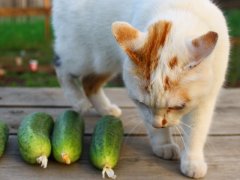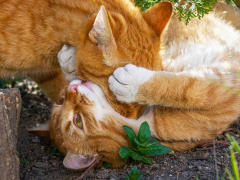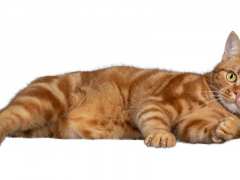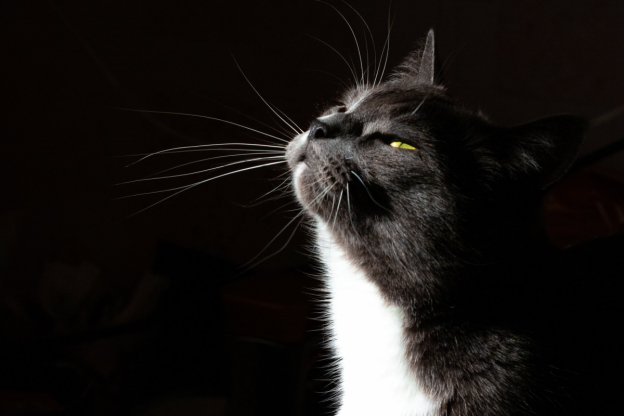
Unlike people, who are highly visual creatures, cats experience the world through smell. There are many scents that cats will be attracted to. Likewise, there is a list of scents that cats hate.
Domestic cats use olfactory and chemical information to evaluate the security and familiarity of their surroundings and to decipher whether people, objects, and food are safe.
Cats are curious, and instinctive hunters. They can detect odors from miles away. Knowing which scents your cat hates can aid their survival and help you naturally deter your cat from accessing undesirable locations.
Let’s decode which kind of scents most cats hate!
Biology Behind a Cat’s Sense of Smell
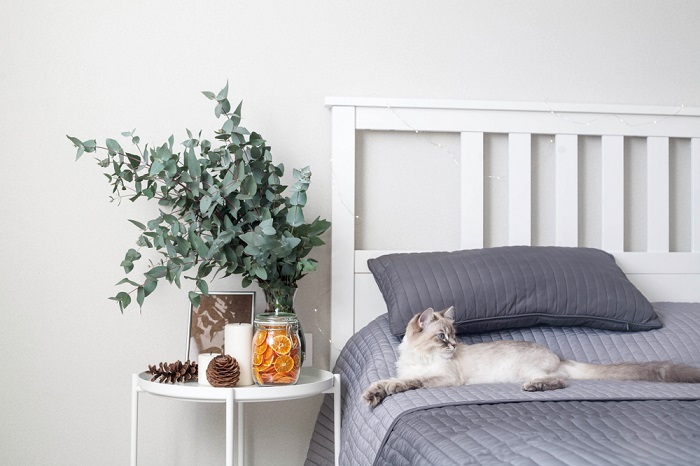
Cats have extremely sensitive noses, causing them to have pronounced reactions to scents that they don’t like.
Cats have an acute sense of smell. It is nine to 16 times stronger than a human’s. Cats detect airborne odors using specialized scent receptors located on the olfactory epithelium within the nasal crevices in the nostrils of the nose.
The lining of a cat’s nose is approximately 20 centimeters squared, compared to the lining of a human’s nose, which is just 4 centimeters squared. Domestic cats have about 200 million olfactive receptors compared to just 5 million in humans.
The cat has an added scent organ at the roof of its mouth called the vomeronasal organ, commonly referred to as Jacobson’s organ. This organ helps detect pheromones released by other cats.
Now that you know how powerful your cat’s sense of smell is, let’s review which aromas they loathe.
Also Read: Do Cats Have A Good Sense Of Smell?
The Different Scents & Smells That Cats Hate Most
A cat’s response to a specific scent detected through the nose isn’t static; its importance can change with novel experiences. Cats can react differently to the same scent when exposed at separate times, and different cats can respond inversely to the same smell.
Here are the most popular scents to which most cats turn their noses.
1. Citrus
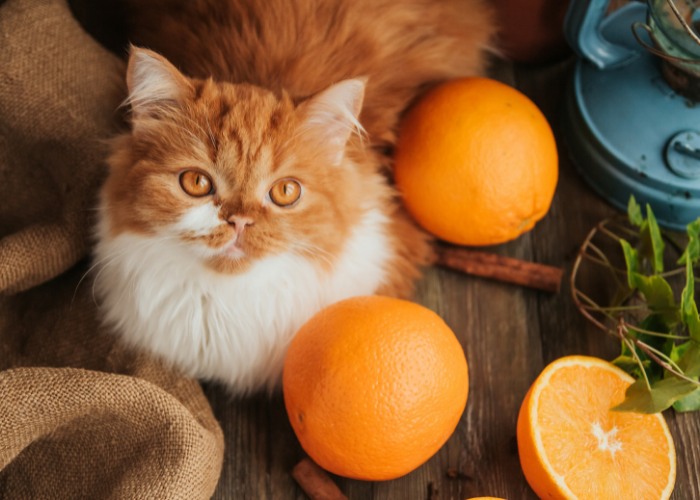
If you’ve ever noticed your cat turning their nose away from citrus fruit, it’s because they find the smell overpowering and unpleasant.
Cats and dogs strongly dislike citrusy fruit like oranges, lemon, mandarin, lime, and grapefruit. Instinctively many felines find the citrus scent overpowering and appalling. Ingestion of citrus fruit, skin, or oil can cause vomiting, diarrhea, and potential dermatitis due to toxicity, so most cats learn to stay away.
Also Read: Can Cats Eat Oranges?
2. Vinegar
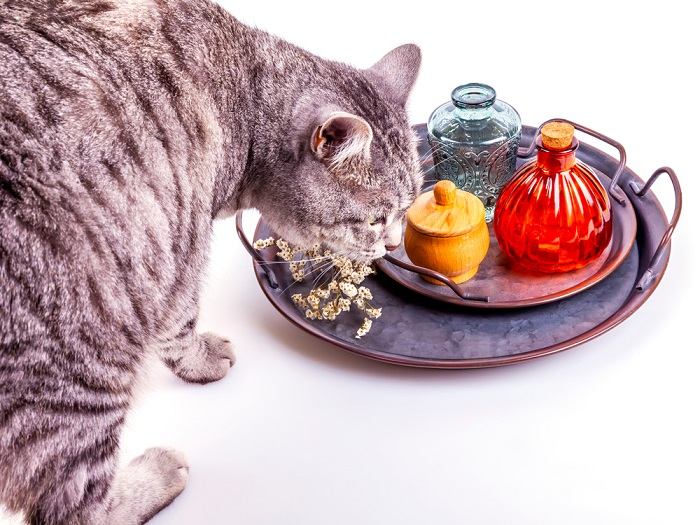
Vinegar is a strong scent for humans, so it is very intense to the feline nose.
Most people and cats dislike vinegar due to its acidic smell. Vinegar is not toxic for cats and has many cooking and cleaning benefits. Although spraying vinegar can keep cats away from a particular area for a brief period, once the scent has dissipated, your cat most likely will return to the same spot.
Also Read: What Smells Deter Cats From Peeing?
3. Eucalyptus
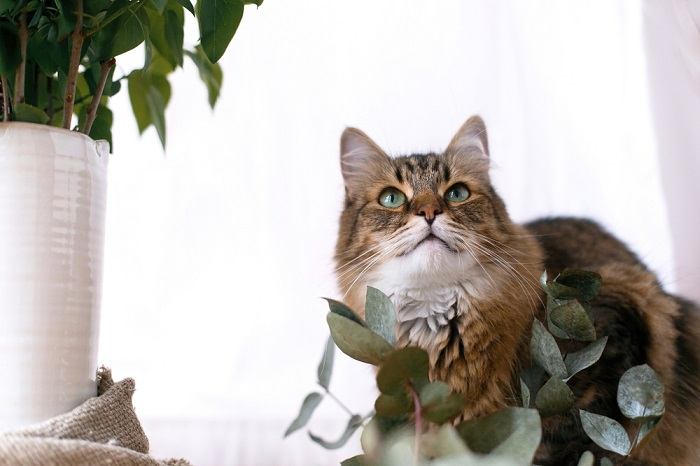
Cats are very turned off by eucalyptus, and for good reason – it can cause drooling, vomiting, and diarrhea for them.
The scent of eucalyptus is another smell that cats instinctively loathe. I have yet to find a cat that likes this scent. Ingestion can cause salivation, vomiting, diarrhea, depression, and weakness.
4. Bananas
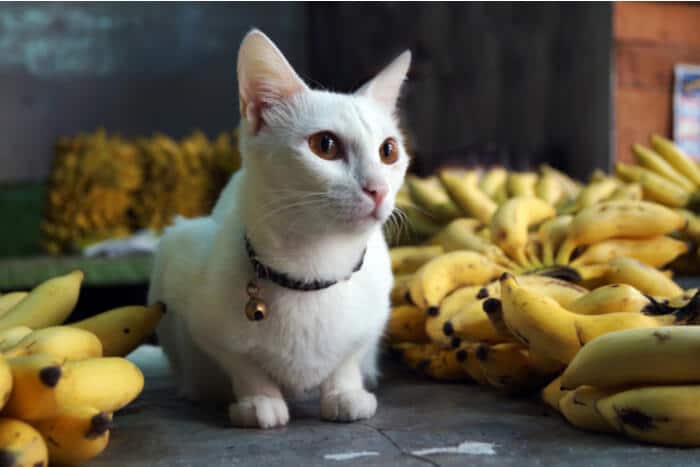
Bananas, particularly the peel, can be used to deter cats from poking around where you don’t want them. They are non-toxic for cats but still hated by them.
Bananas are not toxic to pets. Bananas are tasty and full of nutrients for humans, but unlike us, many cats seem to dislike their smell. Most likely, cats dislike the smell of the actual banana peel since it contains chemicals like water-acetone and ethyl acetate extracts that cats find disgusting. Place a few banana peels to keep cats from digging pot plants or garden beds.
Also Read: List of Foods Cats Can and Can not Eat
5. Garden Mint and Menthol
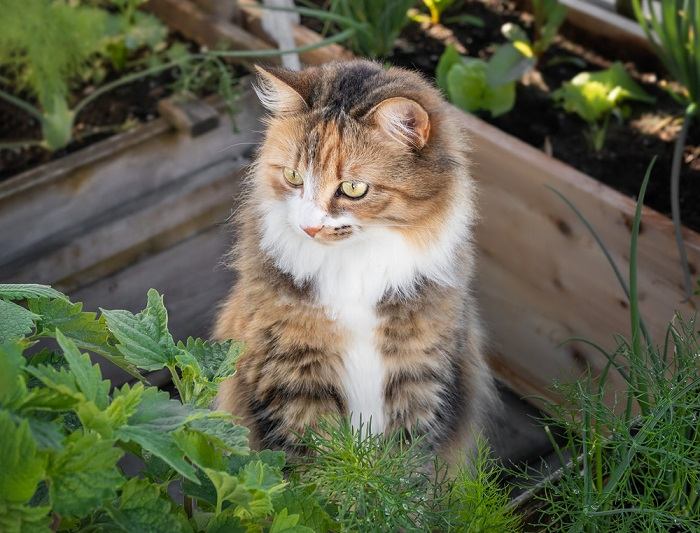
Cats usually hate the smell of mint, despite the fact that it is in the same family as catnip, which most cats love.
Many cats dislike the scent of fresh mint despite liking catnip and catmint, which are also members of the same Lamiaceae family. Garden mint is toxic to cats and can cause vomiting and diarrhea if swallowed. Menthol is a raw chemical found in peppermint and various mint plants, which is applied medicinally in cough medicine, nasal inhalers, and ointments.
Most cats find inhalation of menthol odor unsettling and irritating. Conversely, tigers, lions, and other large cats are attracted to menthol. You might be surprised to know that zookeepers rub peppermint oil and different scents around the habitats of big cats as part of a monthly enrichment program.
Also Read: What Does Catnip Do To Cats & Why Cats Like It?
6. Coffee
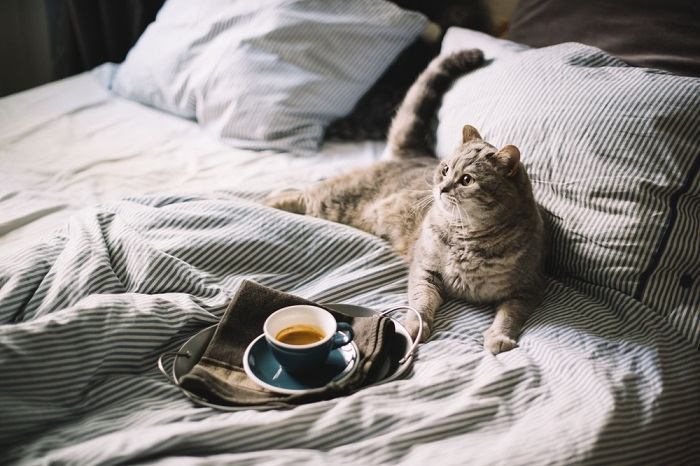
While you may love the scent of your morning cup of joe, cats detest it, as it is toxic to them.
You may start your morning with a brewed cup of coffee, but many cats innately won’t like this scent. Caffeine is a component of the methylxanthine family of compounds found in coffee beans, tea leaves, and cocoa beans and is toxic to pets. Caffeine ingestion can affect the gastrointestinal tract, cardiovascular, and central nervous system and can be fatal if untreated.
Also Read: Poisoning In Cats: Causes, Symptoms, and Treatment
7. Pepper, Mustard, and Chilli

Not too surprisingly, sharp spices are unpleasantly pungent to cats.
Most spices are pretty intense for your cat’s sense of smell. Black pepper, mustard, and chili seeds send my cats running from the kitchen at the speed of light. It’s a good thing cats can’t tolerate the high acidity content and are appalled by the aroma since their instincts protect them from toxicity.
8. Cleaning Products, Disinfectants, Deodorants, and Soaps
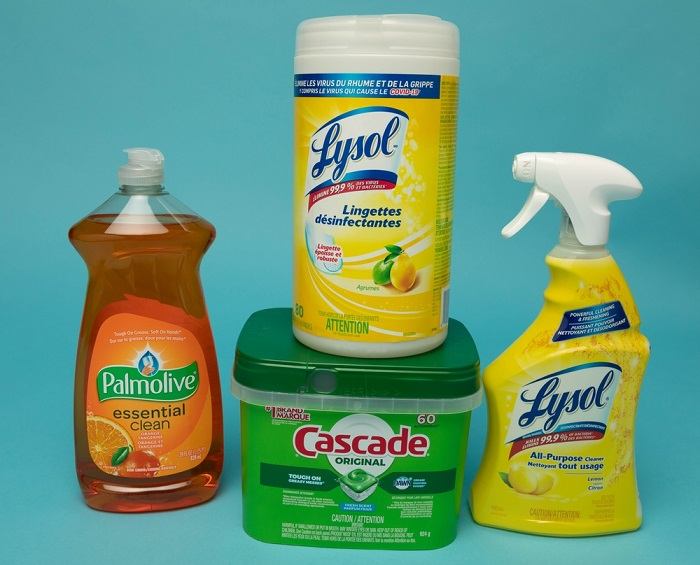
The smells of cleaning products, air fresheners, and soaps are offensive to cats.
Cleaning products, disinfectants, deodorants, air fresheners, and soaps are full of chemicals and overpowering fragrances that most cats dislike. Many household products can be poisonous to cats by walking on treated surfaces, followed by ingestion after grooming. Store products safely out of your cat’s reach and keep the laundry cupboard secure. Contact your vet immediately if you believe your feline has ingested any toxin.
Also Read: Insecticide Poisoning In Cats: Symptoms, Diagnosis & Treatment
Why Your Cat’s Sense of Smell Matters to You
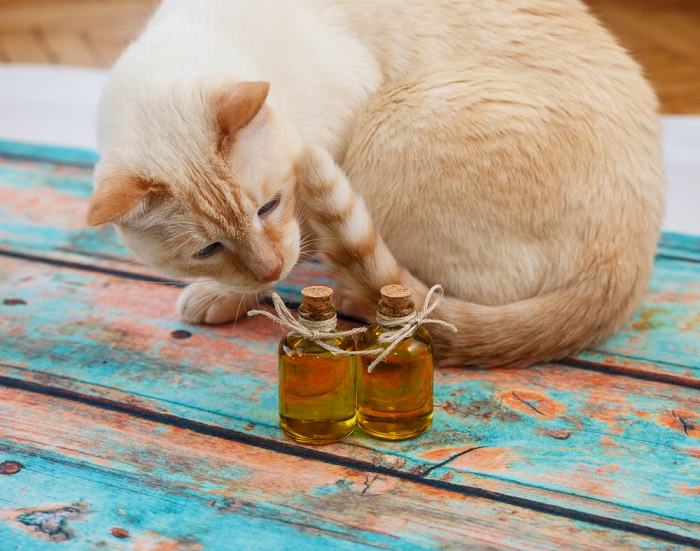
Understanding your cat’s strong sense of smell will help you make sure that your cat’s environment is welcoming and comfortable for them.
Cats are highly explorative animals who use their sense of smell in many behaviors. Cats will often sniff their food before consumption to ensure its freshness and smell the hand of a person who’s about to stroke them. They will inhale odors in their surroundings to verify whether the scent is pleasant or aversive, and of significance or not.
Your cat’s sense of smell matters to you since they like it when their home and territory smell the same. Interference with the sensory perception of their familiar environment, such as using scented litter and strong household chemicals or furniture replacement, can repel your kitty from using the litter box and invoke anxiety and distress.
Knowing which scents your cat dislikes can also be beneficial when you want to discourage a cat from accessing undesirable locations within the house and in the backyard by scattering small scraps on relevant surfaces.
Ultimately, understanding which scents your cat likes or detests can enhance your home environment, help with behavioral issues and improve their well-being.
Also Read: How To Mask The Cat Smell In Your Home
What You Can Do About Your Cat’s Sense of Smell
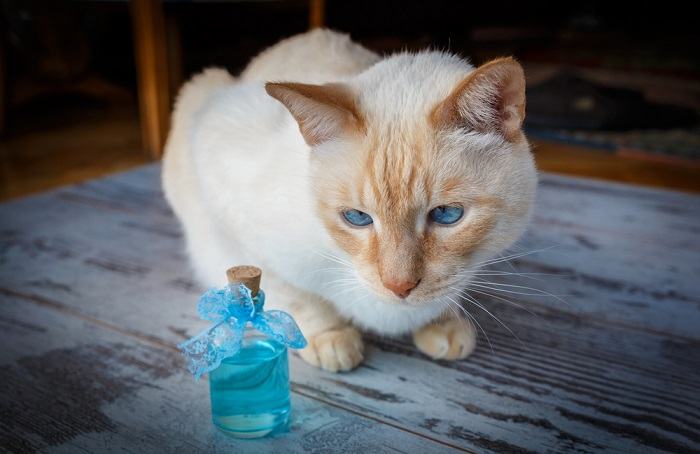
Avoid using overpowering scents in your home, especially those that cats typically do not like.
Respect your cat’s sense of smell. Avoid using potent scent substances like air fresheners, cleaning products, paint, perfumes, and oil and reed diffusers to minimize disruption of your cat’s home scent map.
Cats use their sense of scent to increase their understanding of safety and well-being within the home. Don’t bring outside smells into the house. Leave outdoor shoes at the front door to minimize disruption to your cat’s sense of security of its safety at home.
Introduce novel items with care. Spray Feliway on new objects before bringing them home to lower distress.
Also Read: 10 Toxic & Poisonous Plants For Cats
Final Thoughts
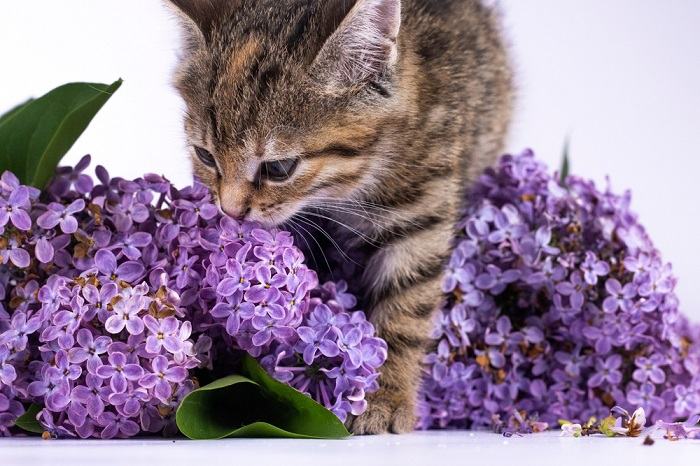
Cats rely on their stellar sense of smell in order to avoid something that can hurt them or make them sick.
Cats are intriguing creatures with a heightened sense of smell. They can evaluate whether a situation, substance, plant, food, or person is safe through various scents and chemicals through sniffing. A cat’s sense of smell protects them and facilitates survival, so trust your cat’s sniffing powers.
Also Read: 15 Human Foods That Are Poisonous & Toxic To Cats
-
ASPCA. (2022). Toxic and Non-Toxic Plant List - Cats. Retrieved October 11, 2022, from ASPCA: https://www.aspca.org/pet-care/animal-poison-control/cats-plant-list
-
Care, I. C. (2020, September 01). Advanced Feline Behaviour for Vet Professionals Module 2 Senses and Communication. UK. Retrieved October 13, 2022
-
Sarah L H Ellis, I. R. (2013). AAFP and ISFM Feline Environmental Needs Guidelines. Journal of Feline Medicine and Surgery, 15, 219-230. Retrieved October 12, 2022
